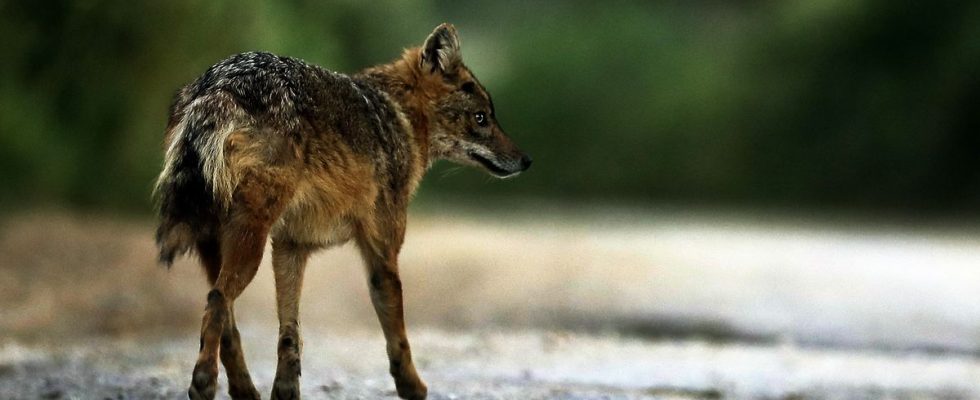It reminds a bit of a fox, a bit of a wolf, but is neither. The golden jackal has made an unprecedented appearance in several departments in recent months. Something to intrigue the locals. 20 Minutes fhave an update on the way of life of this largely unknown mammal in France, thanks to information from French office for biodiversity (OFB), charged by the State with centralizing data on the species.
What does it look like ?
The golden jackal is a canine, a cousin of dogs, wolves and foxes. “With a weight of 7 to 17 kg and a height at the withers of 45-50 cm, the golden jackal is of an intermediate size between the wolf and the fox”, indicates the French office for biodiversity. Its ears are slightly pointed, its tail short and bushy. Its name is linked to the copper highlights of its coat.
Where does he live ?
It is present over a wide range from southern mainland Asia (Vietnam, Thailand) to Europe, including India, the Middle East and Turkey. In Europe, its colonization was long limited to the Balkan region. But since the 1960s, the species has begun a second phase of colonization towards the west and north where isolated individuals have been observed “several hundred km from known population nuclei”. The presence of the species was detected in the 1980s in Italy and Austria, then in the 1990s in eastern Germany, since 2011 in Switzerland and since 2017 in France.
What’s he eating ?
It belongs to the family of carnivores but it is an opportunistic omnivore that can feed on eggs, insects, reptiles, amphibians and fruits. A feature that makes it compete with the fox. His favorite diet, however, remains meat, especially rabbits. Its social organization “allows it to hunt prey of its size” but it is more interested in the carcasses of wild or domestic animals. He can go several days without drinking.
How does he live?
The golden jackal generally lives in pairs or in family groups, with which it is “faithful”. The latest observations in France, however, evoke the presence of an isolated individual, “without making it possible to detect the establishment of a family group or proof of reproduction”. Easy to adapt to, the canine likes wetlands, marshes and the banks of waterways. On the other hand, it avoids areas with the presence of wolves and sectors affected by heavy snowfall.
Where has it been observed in France?
Since 2017, the occasional presence of the golden jackal has been authenticated, with photos and sometimes videos in support, in Haute-Savoie, in Deux-Sèvres, Bouches-du-Rhône, Essonne, Finistère and, recently, in Loire-Atlantique, near Saint-Nazaire, at the end of April. In some areas, sightings of a single adult individual have been repeated over several months or even years. “In Germany and Italy, the collection of several data in the same sector has often resulted in the term installation of the species”, notes the OFB. As for the wolf, this displacement of the jackal can be the fact of dispersing individuals in search of a sexual partner. It is also the sign of an evolution of its original environment, probably in connection with urbanization.
Is it dangerous for humans?
Very discreet, the golden jackal is extremely difficult to observe. However, he would not be “not bothered by the human presence”. “No attack on humans has been recorded to date,” says the OFB. This canid has not been officially implicated in farm animal attacks in France either. On the other hand, he is suspected of having attacked sheep in Italy and Germany.
Is it protected?
Based on a genetic study, the European Commission concluded in 2016 that the golden jackal “cannot be considered an alien species introduced by humans”. This species is therefore “part of the European natural heritage” and as such is listed in Annex V of the Habitats Directive 92/43/EEC which requires Member States to ensure that its populations are maintained in a state of favorable preservation. It is not classified on the list of protected species. In France, the jackal cannot be hunted or trapped, explains the OFB. In Greece, it benefits from a conservation plan.

